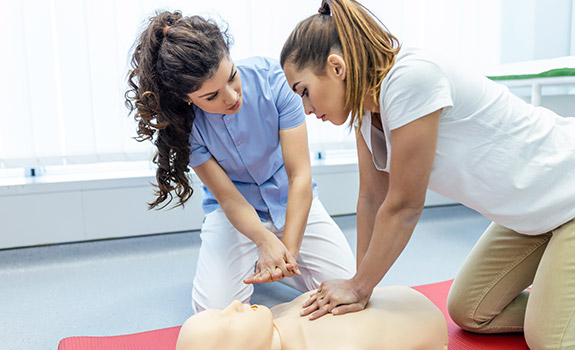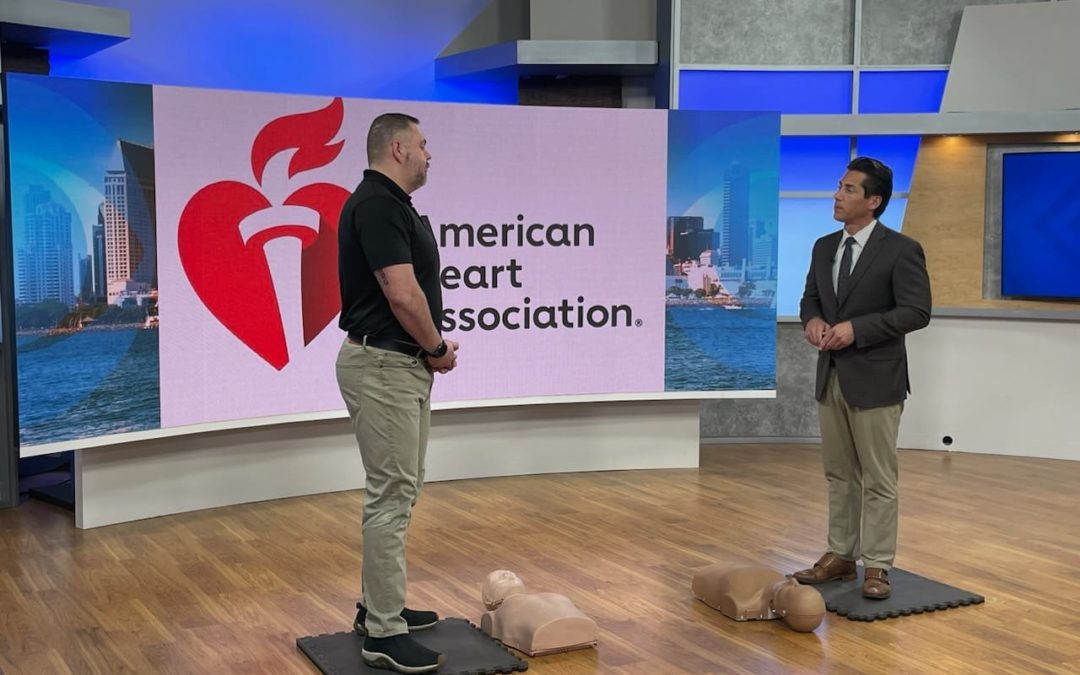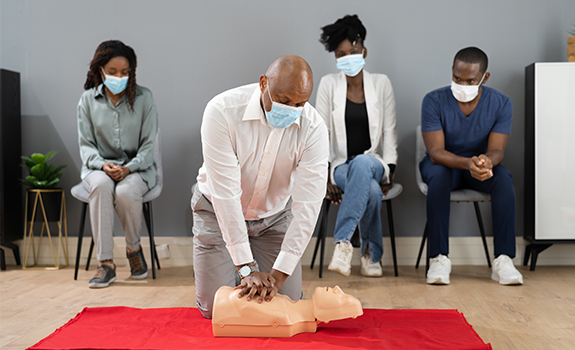Are you looking to teach Basic Life Support (BLS) in your community or for your workplace? You’ve come to the right place! Becoming a BLS Instructor can happen in just a few steps; and once you’ve received your credentials, you’ll be able to teach not just BLS, but also Heartsaver First Aid CPR AED, Heartsaver CPR AED, Heartsaver First Aid, and Heartsaver Pediatric First Aid CPR AED. Here’s everything you need to know about becoming a BLS Instructor.
What is BLS?
BLS (Basic Life Support) Courses are designed to teach the ability to recognize many life- threatening emergencies, as well as how to provide high-quality CPR for adults, children, and infants, use an AED, and relieve choking. The course is intended for both certified or non-certified, licensed or non-licensed healthcare professionals.
How do I become a BLS/CPR Instructor?
- Earn a BLS CertificationThe first step on your journey to become a Basic Life Support Instructor is to earn your BLS certification. You’ll be expected to be competent in performing CPR on all ages by yourself as well as with a team, and you should know how to use an AED on adults, children, and infants.While many people already have their BLS provider certification it is important to make sure you have the appropriate BLS certification for the brand of instructor course you may take – for example, American Heart Association (AHA) instructor candidates will need to have an AHA BLS certification card. Once you have obtained BLS certification, you can look for a BLS instructor course near you.
- Take a BLS Instructor CourseThe next step is to take a BLS Instructor Course, where you will earn a BLS Instructor Card.This course is designed to prepare students to teach American Heart Association Instructor-led and blended learning courses, and educates instructor candidates on how to adequately use AHA Instructor teaching materials, ensure that students meet learning objectives, offer student coaching skills, provide an objective skills performance evaluation, and follow AHA Instructor and course policies.
What’s Included in a BLS Instructor Course?
The course covers core content and discipline-specific content required to teach AHA courses.
Among other topics, the course covers:
- American Heart Association Program Administration (PAM) and Organization (PROAD)
- Registering on & navigating the AHA Instructor Network
- Being an effective instructor
- Planning to teach the course
- Acquiring equipment and course materials
- Classroom setup
- Course administration
- Getting your student completion cards
- Using feedback as a tool for improvement
How Long Does it Take to Become a BLS Instructor?
It depends on a few things; whether or not you already have your BLS Certification and which particular Instructor course you wish to take.
A typical AHA BLS Instructor Course is
8 hours, plus a 4-hour student teaching session. If you haven’t already earned a BLS Certification, you’ll have to factor in the time it takes to pass that course – and whether you take the course in-person, online, or as a hybrid class.
Can I take a BLS Instructor Course Online?
To become an AHA BLS Instructor, candidates
must complete the online portion, followed by the classroom-based course. The online portion of the course contains both core content and discipline-specific modules to prepare the instructor candidates for the hands-on session.
In the classroom, Faculty will continue preparing instructor candidates to become AHA instructors by focusing on the in-depth material about the Heartsaver and BLS disciplines that candidates will be teaching. The classroom course includes instruction, practice, and an exam, allowing instructor candidates to successfully use their instructor materials and skills.
Ready to become a BLS Instructor? Check out our BLS Instructor Courses in
San Diego and
Tustin today!




